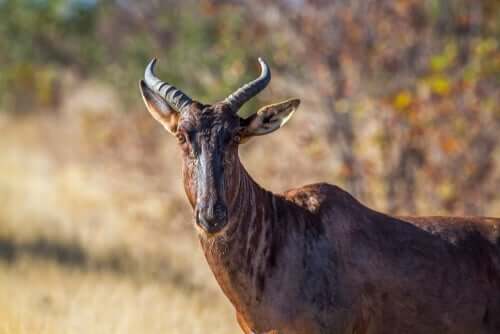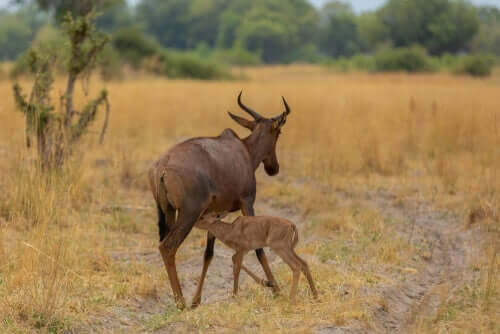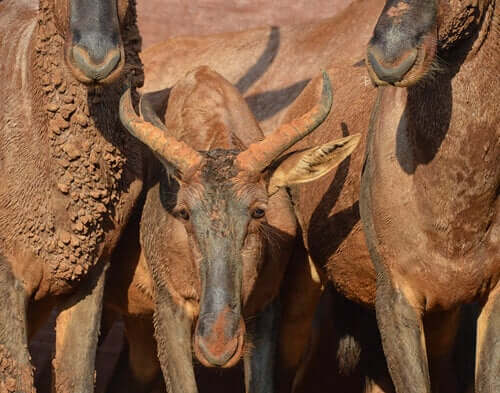The Common Tsessebe: Habitat and Characteristics

The common tsessebe is an animal that moves around in huge packs all through Africa, following the monsoons. Keep reading to learn more about one of the biggest African herbivores.
The common tsessebe: habitat and morphology
The common tsessebe, or Damaliscus lunatus lunatus, is a fast, muscular mammal that lives in eastern and southern Africa. They’re one of only six subspecies of topi on Earth. Their bodies and fur color also make them look very similar to the hartebeest, another African mammal.
The habitat of the common tsessebe is mostly in the north of the African Savannah. They live in wide plains that end up submerged during the monsoon season. There are also hundreds of subspecies of common tsessebe in the area around southern Sudan that migrated looking for greener pastures at some point, and never returned to their homes.

Female tsessebes are generally smaller and skinnier than males. They’re usually around 45 inches long and weigh about 285 pounds. Both males and females have similar horns, in the shape of a crescent moon. Even at a glance, it’s clear theirs are much weaker and less impressive than the horns of the topis from eastern Africa.
Their coat is also less colorful. While topis have reddish fur, the common tsessebe generally has fur somewhere between brown and black, which blends in better with their environment.
A migratory, sociable herbivore
Tsessebes live in groups of many different sizes. In some cases, they can have hundreds of members, especially in the major migrations before monsoon season. Their reproductive habits and their sociable behavior play a big part in their territorial instincts, because m ales have to have their own space if they want to reproduce.
In some of the bigger packs in the African Savannah, that could mean anywhere between 50-400 hectares. Males increase their territory bit by bit, and only migrate to look for places with more water or better grazing patches. They can quickly re-establish their territories and relationships when they come back.
Meanwhile, females tend to live in groups of mothers and children. They move around in areas set apart from the males’ territories.

The mating season lasts around three months. During that time, the males will form packs of about 100 members that fight each other to monopolize whole groups of females. The females travel around during heat, guided by the scents of the males. They’ll only approach a male to mate, because they generally give birth in the dry season.
The common tsessebe: a victim of poaching
Although the IUCN doesn’t classify this species as endangered, researchers say that there was a massive problem between 1970-1980 that led to their extinction in Mozambique. Right now, people are working to introduce the species into the area around Swaziland once again.
The main threat facing these herbivores is poaching. The price for one can range from anywhere between $800 and $4,950 dollars on the black market. That has led South Africa to label it as endangered, meaning you need a special permit to hunt them. Thankfully, the South African government’s efforts are helping the population grow, albeit slowly.
All cited sources were thoroughly reviewed by our team to ensure their quality, reliability, currency, and validity. The bibliography of this article was considered reliable and of academic or scientific accuracy.
- UCN SSC Antelope Specialist Group 2017. Damaliscus lunatus ssp. lunatus. The IUCN Red List of Threatened Species 2017: e.T6240A50185806. http://dx.doi.org/10.2305/IUCN.UK.2017-2.RLTS.T6240A50185806.en. Downloaded on 09 April 2019.